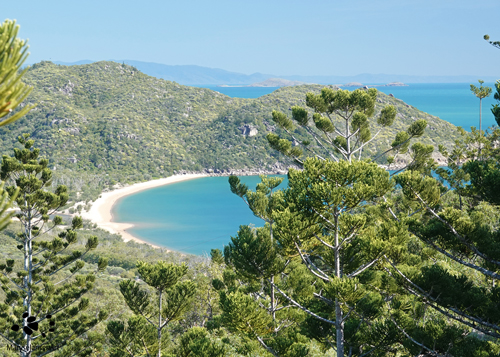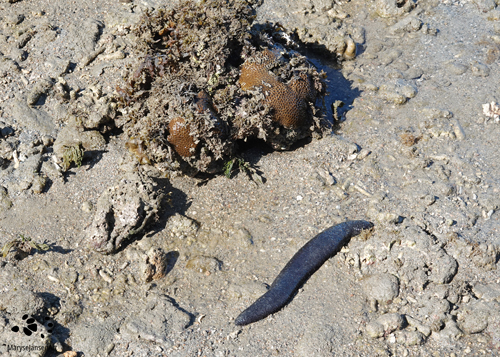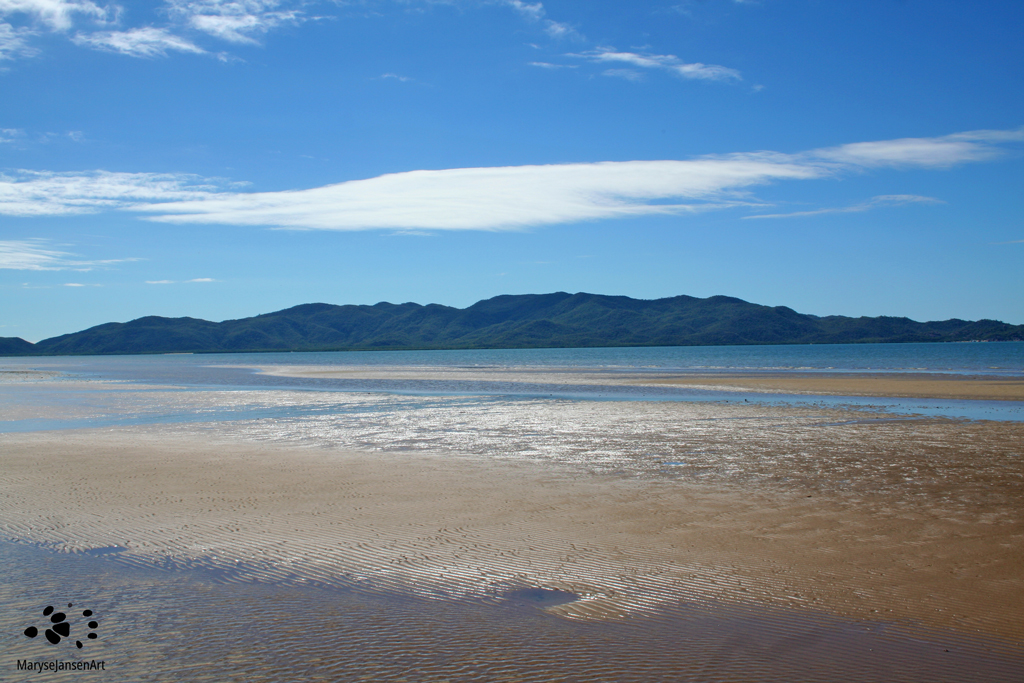Landscape Photography with marysejansenart
Magnificent Views and Secluded Beaches

Table of Contents
The Pull of Magnetic Island
During my walks on Cape Pallarenda, which I have described to you over the past few weeks, I regularly enjoyed the view across the bay. My gaze was drawn 8km offshore off Townsville to an island. This 52km2 sized island rises up from the coral reefs of the Great Barrier Reef World Heritage Area and features a mountainous landscape. It listens to the name Magnetic Island or Yunbenun in the language of the Wulgurukaba, the Aboriginal people who are the traditional custodians of this land.
The view takes me back to 2010, when I visited this island for the first time. A short ferry ride takes you there and on the island itself you can get around by bus or hire a car. I remember stunning scenery of large granite boulders, forests with Gum Trees and Hoop Pines, secluded bays and beaches and beautiful blue water. Can you imagine I am drawn to go here again? Magnetic Island pulls on you like a magnet! With 78% of the island being a national or conservation park, featuring numerous walking tracks, this place is right up my alley!
Magnificent Views on the Forts Walk
Today is the day. I settle in and enjoy the 20min ferry ride, before landing in Nelly Bay, from where I take the bus to Forts Junction. The Forts Walk has historical value as well, since the WWII Forts that were built here for coastal defence are listed on the Queensland Heritage Register. Since this is a nature photography blog, I will keep my focus on the natural aspects of the walk.
Magnetic Island arose due to volcanic activity 275 million years ago. As the volcanic rocks eroded away over time, the underlying granite mass got exposed. Under the influence of more erosion cracks and fault lines have developed into valleys and gulleys. And extraordinary array of granite boulders dominate the landscape today. They come in all sorts of shapes and sizes, some balanced awkwardly on top of each other.
It is through this landscape that I climb higher and higher to enjoy the magnificent views! The forest consists mainly of Eucalyptus Trees and Magnetic Island Wattles. The Wattles are currently flowering abundantly which dots the forest with cheerful yellow patches. Towering over the other trees are the Hoop Pines, adding another interesting dimension to the landscape. All of that is backed by blue skies and turquoise waters. Well worth the climb!

Secluded Beach in Florence Bay
I decide to walk down to Florence Bay. This is one of those secluded bays and beaches that you can find on the island. This place has significant natural value. Behind the sand dunes you can find a rare vegetation community, called Littoral forest. It is also known as ‘Beach Scrub’. Here on Magnetic Island this forest type is dominated by the Northern Swamp Box, the Townsville Wattle, the Moreton Bay Ash and various weeping tree species. It is a type of rainforest and has been declared critically endangered since 1999!
I emerge from the Littoral forest to enjoy a beautiful bay which hosts a contained fringing reef. A small creek flows onto the beach from my right hand side. On the beach next to it a single Grey Mangrove Tree stands proudly, seemingly on a carpet of its own pencil roots. On both sides the bay is lined by the granite boulders with all their magnificent shapes. A Brahminy Kite circles overhead. What a great place for a picnic on this long walking day!
Sea Cucumbers
I watch the sea water retracting into low tide and parts of the reef become exposed. I can see hard corals, soft corals and lots of black Sea Cucumbers! Fascinating animals!

Sea Cucumbers are the earthworms of the ocean! They filter the sand by taking it in through their mouth part and break down organic matter and detritus internally. They pass the sand back out through their anus. Over 1500 species have been identified in the world, and of those around 200 occur in Australia. They can be found in all marine environments, but in the tropics they are most abundant. They can be found at any depth but prefer shallow waters. Being an echinoderm, they are related to creatures such as sea stars and sea urchins.
A little warning not to handle them: they may look like soft, placid creatures but when they are threatened they can display a spectacular defense tactic. Sea Cucumbers are able to eject parts of their sticky intestines in an attempt to entangle potential predators. Not a pleasant experience! And on top of that they also release a toxin called Holothurin with that. So it’s best to leave them alone and marvel at them from a respectful distance.
The final leg of my walk takes me to Horseshoe Bay. A fair bit of climbing is involved as I conquer the next ridge of granite boulders. Rewarding views occur accordingly and I can’t get enough of them! Horseshoe Bay is the largest bay on the island. I have now left the National Park. Horseshoe Bay is very pretty but not unspoilt – this is the place where you find shops and restaurants and a bus that takes you back to the ferry!
I invite you to join me on this beautiful walk by watching the latest episode of ‘Come for a walk in the Australian Bush’ below:
If you are interested in purchasing the featured image ‘Magnetic View’ or would like to see what the image looks like on the various products, please head to my shop. If you prefer ‘A Piece of Paradise’, click shop here.


